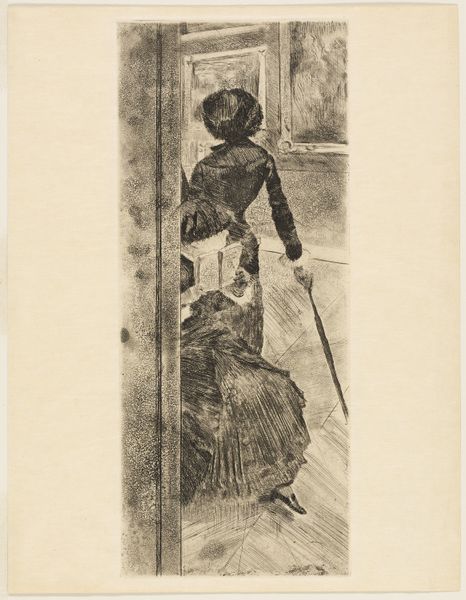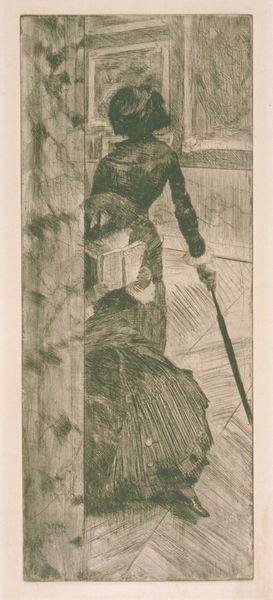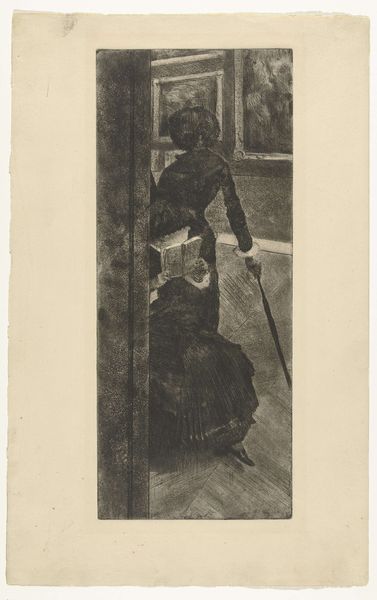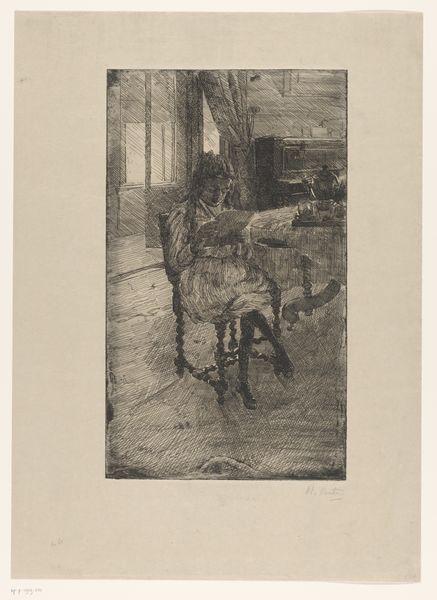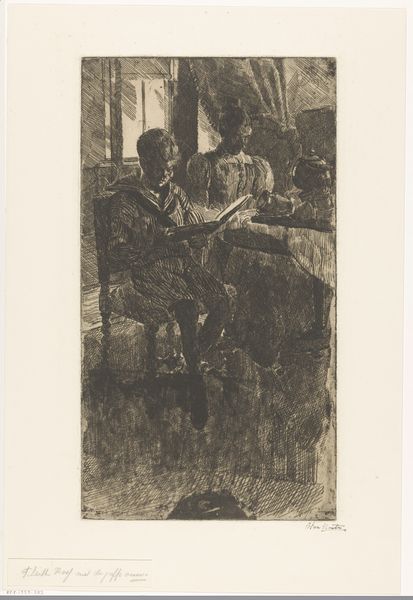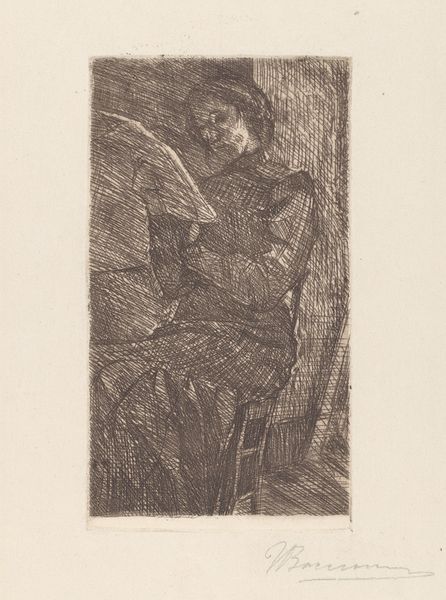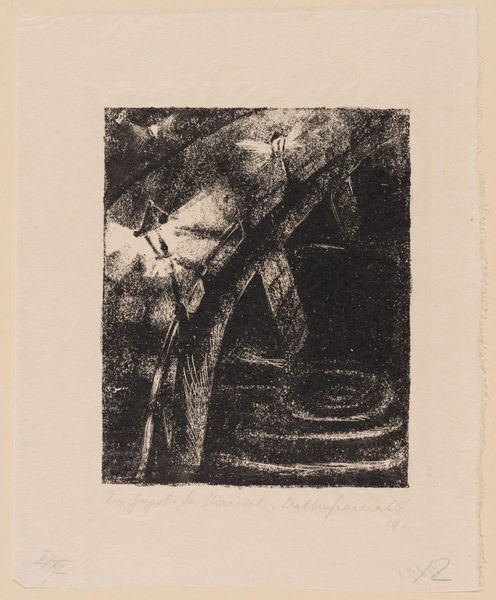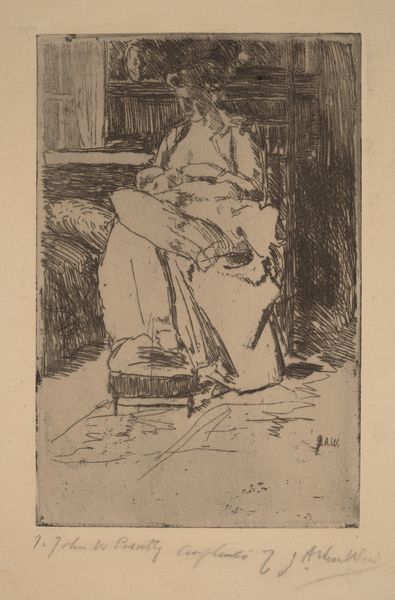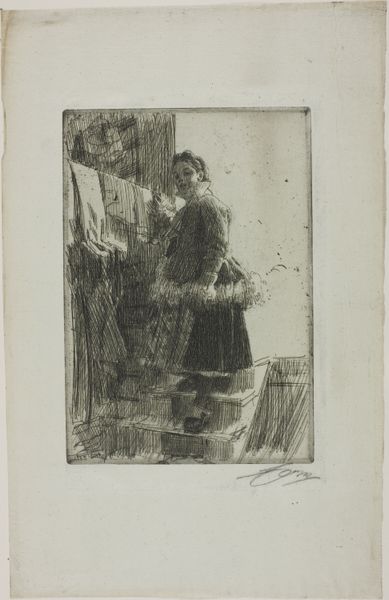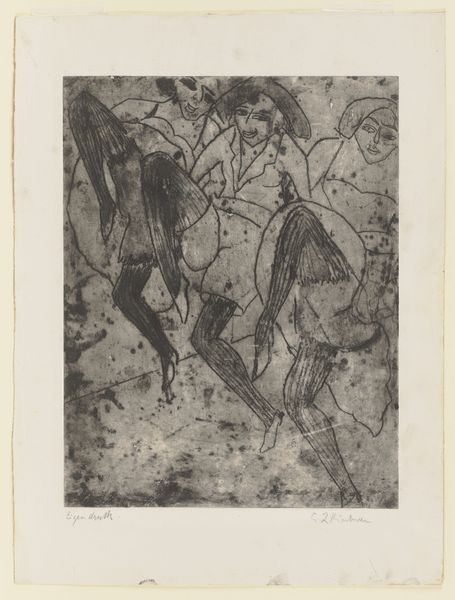
Mary Cassatt in the Paintings Gallery at the Louvre 1879 - 1880
0:00
0:00
drawing, print, etching, paper, ink
#
portrait
#
drawing
# print
#
impressionism
#
etching
#
paper
#
personal sketchbook
#
ink
#
france
Dimensions: 305 × 126 mm (image/plate); 340 × 175 mm (sheet)
Copyright: Public Domain
Editor: This is Edgar Degas's "Mary Cassatt in the Paintings Gallery at the Louvre," made around 1879-1880 using etching and ink on paper. It strikes me as both intimate and distant, a captured moment that still feels very private. What do you see in this piece? Curator: What immediately captures my attention is the way Degas positions Cassatt. She's not simply admiring the art; her presence subtly challenges the male-dominated space of the Louvre at that time. Consider the gaze, the clothing: it's not merely observation, but an assertion of belonging within a historically exclusive cultural sphere. Editor: That’s a perspective I hadn’t fully considered. Is Degas, as a male artist, making a statement *about* Cassatt’s position, or *emphasizing* her otherness? Curator: I think it's deliberately ambiguous, and that's where the work’s power lies. Degas acknowledges her presence, shows her engagement with art in a public space. But the etching style, with its stark contrasts and angular lines, also introduces an element of tension. It asks us to question the roles available to women artists in the late 19th century and the assumptions behind how they interact with artistic heritage. Look at her tightly gloved hands, versus the confident strides of the men depicted in other works. It evokes societal expectations versus lived experiences. Editor: That's fascinating. I see how looking at it through that lens brings out new dimensions. Curator: Exactly! Thinking about the power dynamics inherent in artistic representation allows us to appreciate the nuance in what Degas is conveying and the realities faced by women artists of that period. Editor: I'm glad you pointed that out. It really opened my eyes. Curator: And in turn, it highlights the value of continually re-evaluating established narratives in art history, ensuring broader voices and perspectives are understood.
Comments
No comments
Be the first to comment and join the conversation on the ultimate creative platform.
